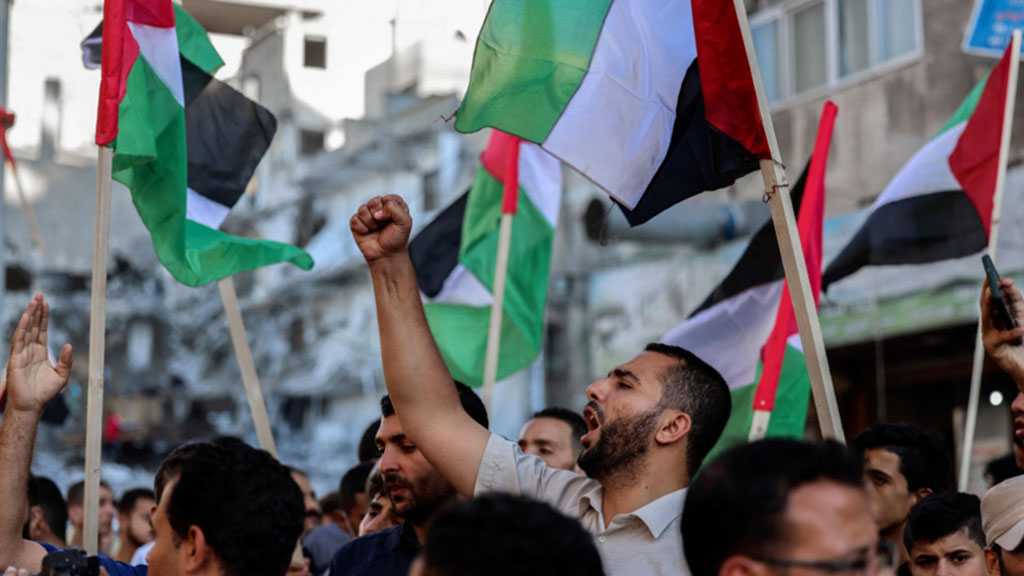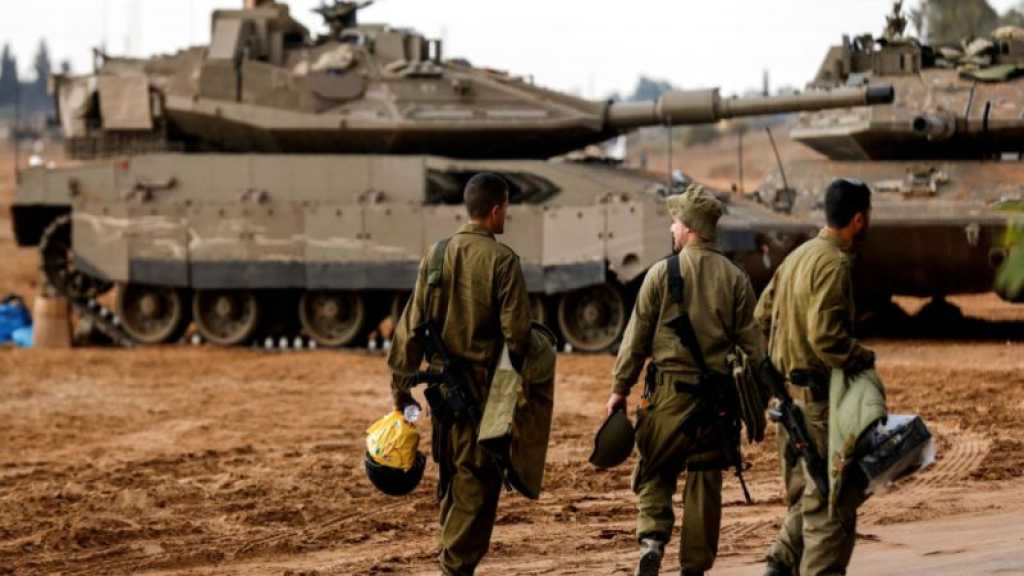The ’Flags March’ Under Redlines: The Resistance Has the Final Say

By Rajab Al-Madhoun – Al-Akhbar Newspaper
Translated by Staff
The Palestinian resistance succeeded in imposing its redlines on the ‘Israeli’ enemy, after forcing it to change the course of its provocative activity organized by settlers yesterday in al-Quds, and escalating the pressure on the Gaza Strip borders at the same time. This proves that the battle of "al-Quds Sword" was able to raise the awareness of the enemy’s leaders, who find themselves today facing major challenges that will force them, in a way or another, to change their priorities.
Gaza | In conjunction with the "Flags March" in the occupied city of al-Quds, whose course was changed to avoid provoking the Palestinians after talks led by the Egyptian mediator that led to the consolidation of the Resistance’s redlines, the Palestinians in the Gaza Strip have escalated a heavy popular pressure along the borders of the Strip, hours after the marches in Gaza city rejecting the provocations in al-Quds. Since yesterday afternoon, Palestinian activists have launched large batches of incendiary balloons towards the envelope’s settlements in response to the "Flags March", resulting in more than 20 large fires in those settlements.
By the evening, rougher tools were used, for example, setting tires on fire along the borders, as well as the return of the nighttime confusion operations, which were supposed to last at least until the end of the week, in order to force the occupying government to stop its provocations in al-Quds and its restriction on the Gaza strip since the “al-Quds Sword” operation. In fact, enemy authorities have confirmed dozens of fires in the forests of the envelope settlements as a result of the incendiary balloons launched from Gaza, and sent more fire brigades to the area, in addition to activating the “Iron Dome” in case of any further escalation. The Interior Front of the occupation army also instructed firefighters to prevent approaching the border not to be shot by the resistance. The Hebrew "Channel 12" stated that restrictions were limited only to the operation of these units, while no similar restrictions were imposed on farmers working near the borders.
The same channel indicated that the occupying authority has promised “Hamas” a harsh response to the balloons launching, and that it has informed the Egyptian mediator that the response would be after the end of the "Flags March" and that the army is conducting consultations in that regard. On the other hand, “al-Akhbar” learned from Hamas sources that contacts between the movement and the Egyptians were around the clock, and that the Palestinian factions informed the Egyptian side that any ‘Israeli’ response to launching balloons would be reciprocated by an equivalent response by the resistance and that the popular pressure won’t stop as long as the enemy continues its tight policy towards Gaza. However, the contacts brokered by the Egyptian mediator led to the occupation's retreat from its provocations that might have causes an explosive situation, as it allowed approximately 3,000 settlers [20,000 last year] to stand in front of Bab al-Amoud only, without being allowed to break into the Al-Aqsa Mosque. In addition to that, it changed the path of the march by staying away from the Islamic neighborhood, which defused the crisis and prompted the factions to avoid a harsh response, according to the same sources, which confirmed that the resistance imposed its will on the enemy through the talks that took place yesterday, following serious messages conveyed to the ‘Israelis’ with the intention of responding to the provocation. It also pointed out that the factions set redlines for this march in regard of entering the Islamic neighborhood and storming al-Aqsa through Bab al-Amoud, describing yesterday as a victory for the will of the resistance, which succeeded in imposing the "Gaza-al-Quds" equation.
As the ‘Israeli’ reconnaissance aircraft continues to fly heavily over Gaza to monitor the resistance movements and in anticipation of the escalation of events and the possibility of launching rockets, thousands of Palestinians went out in massive and angry marches in Jabalia in the north of the Strip, Gaza City and Khan Yunis in the south, denouncing the “Flags March”. During the marches, national and Islamic forces confirmed that the resistance in Gaza had thwarted the plans of the occupation in al-Quds, as the protesters in Khan Yunis burned the pictures of the new ‘Israeli’ Prime Minister, Naftali Bennett. In the occupied West bank, confrontations broke out between Palestinians and the occupying army, after the youths threw stones and empty bottles at enemy soldiers and set tires on fire, and the ‘Israeli’ army responded by firing tear gas canisters and rubber-coated metal bullets, while no casualties were reported, except for dozens of suffocation injuries. And in the south of the West Bank, the occupation army suppressed the march in Bethlehem, which exits Bab al-Zaqqaq area, passing through al-Quds-al-Khalil Street, reaching the northern entrance to Bethlehem at the vicinity of the Bilal Bin Rabah Mosque. Al-Khalil also witnessed the outbreak of confrontations at the entrance to the al-Aroub camp, in the north of the city, while dozens of people suffocated by gas inhalation, and in which the enemy closed the entrance to the camp with barbed wires, in anticipation of confrontations that coincided with the “Flags March”, as the soldiers deliberately fired gas and sound bombs into the windows and yards of the houses.
The Palestinian factions, regardless of their orientations, called on the Palestinians from the inside and from al-Quds to march in the squares of al-Aqsa Mosque and the Old City, to respond to the settlers’ march protected by the occupation police.
Comments




